 Oceaneering’s Maritime Business Systems group hosts its annual Portvisionville event on Wednesday February 10, 2016 at the Hyatt Regency in Houston, TX, to share the latest news and PortVision product developments with its growing customer base. Its annual customer advisory meetings provide a forum for sharing ideas and experiences in a collaborative environment, with the goal of further enhancing business operations while helping to improve safety and security.
Oceaneering’s Maritime Business Systems group hosts its annual Portvisionville event on Wednesday February 10, 2016 at the Hyatt Regency in Houston, TX, to share the latest news and PortVision product developments with its growing customer base. Its annual customer advisory meetings provide a forum for sharing ideas and experiences in a collaborative environment, with the goal of further enhancing business operations while helping to improve safety and security.
Oceaneering Maritime Business Group latest innovation in AIS-based business intelligence is now available, delivering valuable new real-time analytics and reporting features plus add-on modules for specialized applications.
 Event attendees will see live PortVision 360 demonstrations and learn about enhanced alerting and reporting capabilities that can be customized for information sharing and collaboration. Oceaneering will also host exclusive sessions with key customers and industry stakeholders during the day, focused on critical issues facing marine terminal management and marine pipeline protection.
Event attendees will see live PortVision 360 demonstrations and learn about enhanced alerting and reporting capabilities that can be customized for information sharing and collaboration. Oceaneering will also host exclusive sessions with key customers and industry stakeholders during the day, focused on critical issues facing marine terminal management and marine pipeline protection.
Oceaneering is launching the PortVision 360 service at its annual customer event. Easy to buy and deploy, PortVision 360 provides many new options for delivering valuable information and knowledge about vessel and terminal activities. Users can quickly and easily answer questions about vessel movements and events anywhere in the world. PortVision 360 is available in two editions with tiered feature sets, and builds on the foundation of a product line that has enabled more than 2,000 users worldwide to enhance efficiency, reduce cost and increase safety and security.
Oceaneering will also continue its annual series of marine industry stakeholder meetings during the day-long event, with one session focused on marine terminal optimization, and the other on monitoring and protecting pipeline infrastructure and other valuable marine assets. Both sessions are designed to help solve industry challenges by fostering a combination of dialog, brainstorming and networking related to evolving issues and best practices in safety, security and operational efficiency. Representatives from major oil companies and leading terminal and pipeline operators have again registered to attend.
WHEN: Wednesday, February 10, 2016
Afternoon – Main Event
2:30 p.m. to 6 p.m.: - Portvisionville
Morning – Customer Advisory Meetings
9 a.m. to 2 p.m.: Two parallel tracks on terminal optimization and marine asset protection. Continental breakfast/lunch included at each.
WHERE: Hyatt Regency Houston, 1200 Louisiana St., Houston, TX 77002, T: 713.654.1234
HOW: Oceaneering’s Portvisionville event is free to industry participants and open for registration. The morning customer advisory meetings are by invitation only. For more information or questions, contact: Andrea LaVorgna, 858.586.0933, x122, or email: This email address is being protected from spambots. You need JavaScript enabled to view it..
About Oceaneering and its Maritime Business Systems
Oceaneering’s Maritime Business Systems practice includes PortVision and related software and services that help oil companies, marine terminal operators, fleet owners/operators and other maritime users improve business operations through instant, continuous visibility into vessel and terminal activities. The company’s maritime business systems leverage the PortVision Automatic Identification System (AIS) vessel-tracking service to automate and enhance operations, reduce costs, improve safety and security, and drive better business decisions.
Based in Houston, Texas, Oceaneering International Inc. (NYSE: OII) is a global oilfield provider of engineered services and products, primarily to the offshore oil and gas industry, with a focus on deepwater applications. Through the use of its applied technology expertise, Oceaneering also serves the defense, entertainment, and aerospace industries. For more information about Oceaneering, click here. For more information about PortVision and Oceaneering’s Maritime Business Systems, click here.


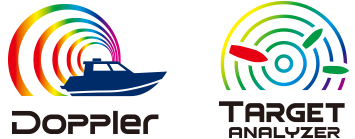 Tracking and interpreting threats is now easier than ever with the DRS4D-NXT Radar. Using Furuno’s advanced Doppler technology, this new Radar acquires and tracks targets in virtually every sweep, or just a few seconds. Almost instantly, you will see the target’s speed and course vector. If the target is hazardous, it will also be displayed in red, making it easier to identify and predict its course. The NXT Radar’s incredible ARPA signal processor will display and track up to 100 targets in a single sweep! The entire target theatre can be viewed, monitored, and tracked simultaneously, at any range. For an even more detailed display, target trails and Furuno’s unique True Trail feature can be utilized, allowing you to graphically see the direction in which a target is moving, independent of your own vessel’s motion.
Tracking and interpreting threats is now easier than ever with the DRS4D-NXT Radar. Using Furuno’s advanced Doppler technology, this new Radar acquires and tracks targets in virtually every sweep, or just a few seconds. Almost instantly, you will see the target’s speed and course vector. If the target is hazardous, it will also be displayed in red, making it easier to identify and predict its course. The NXT Radar’s incredible ARPA signal processor will display and track up to 100 targets in a single sweep! The entire target theatre can be viewed, monitored, and tracked simultaneously, at any range. For an even more detailed display, target trails and Furuno’s unique True Trail feature can be utilized, allowing you to graphically see the direction in which a target is moving, independent of your own vessel’s motion.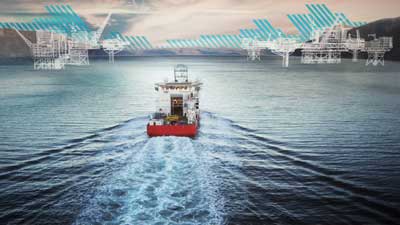 Image Courtesy: SMSC
Image Courtesy: SMSC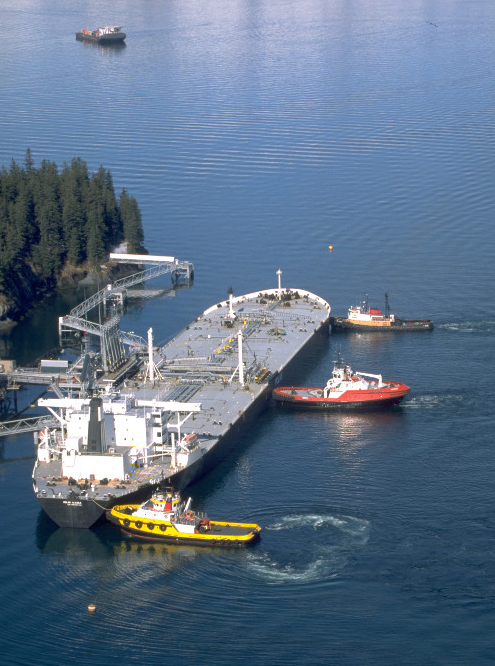 Crowley Maritime Corporation’s
Crowley Maritime Corporation’s 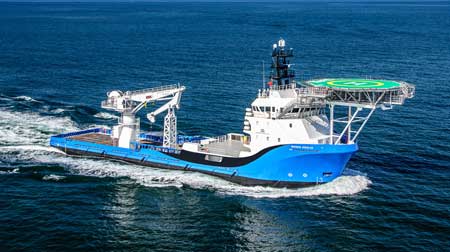 Bordelon Marine
Bordelon Marine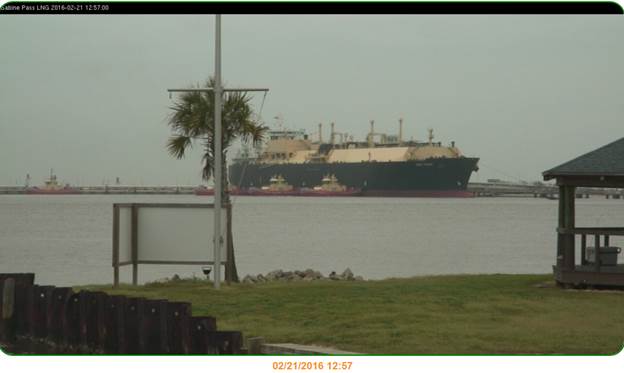 On Sunday February 21st at 12:09PM Eastern time, the LNG ship Asia Vision arrived in Sabine’s southern berth.
On Sunday February 21st at 12:09PM Eastern time, the LNG ship Asia Vision arrived in Sabine’s southern berth. 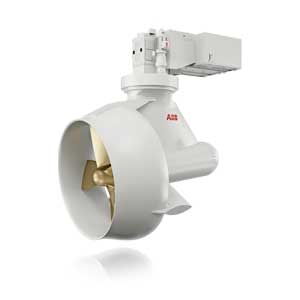 ABB
ABB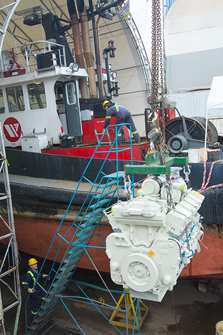 “We don’t usually remove the heads at mid-life on the Cummins engines,” Randy Beckler, Shore Engineer for
“We don’t usually remove the heads at mid-life on the Cummins engines,” Randy Beckler, Shore Engineer for 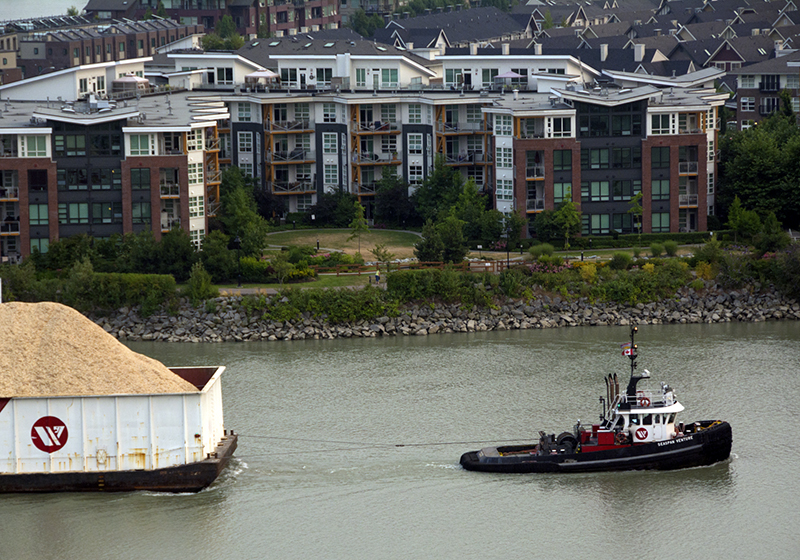 These two boats have been very popular with their crews. The hulls were built to order in China, shipped to Canada by barge, and finished up at Seaspan’s Vancouver Shipyard. There was a lot of input from operators in the functional design. At the time they were a new generation of tug with a fine, longer, double-chined hull. The 64- by 23-foot hull has a moulded depth held to 10.4-feet to facilitate working some of the shallower areas of the lower Fraser River while providing good water flow to the propellers. This fine hull form, combined with a smooth "slipper" stern reduced the wake wash and lessoned the need for the tug to make a "slow-bell" past riverside moorings.
These two boats have been very popular with their crews. The hulls were built to order in China, shipped to Canada by barge, and finished up at Seaspan’s Vancouver Shipyard. There was a lot of input from operators in the functional design. At the time they were a new generation of tug with a fine, longer, double-chined hull. The 64- by 23-foot hull has a moulded depth held to 10.4-feet to facilitate working some of the shallower areas of the lower Fraser River while providing good water flow to the propellers. This fine hull form, combined with a smooth "slipper" stern reduced the wake wash and lessoned the need for the tug to make a "slow-bell" past riverside moorings.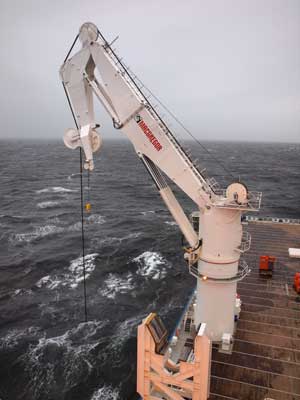 MacGregor, part of Cargotec, has strengthened its position in the heavy-lift market by confirming an important new contract to deliver twelve 450-ton capacity heavy-lift cranes for six Ecolift F900 vessels. The 13,300 dwt vessels are being built by two Chinese shipyards, Hudong and Huangpu Wenchong, for long-term charter to US operator Intermarine. Options remain for a further four vessels. The order was booked into fourth quarter 2015 order intake.
MacGregor, part of Cargotec, has strengthened its position in the heavy-lift market by confirming an important new contract to deliver twelve 450-ton capacity heavy-lift cranes for six Ecolift F900 vessels. The 13,300 dwt vessels are being built by two Chinese shipyards, Hudong and Huangpu Wenchong, for long-term charter to US operator Intermarine. Options remain for a further four vessels. The order was booked into fourth quarter 2015 order intake.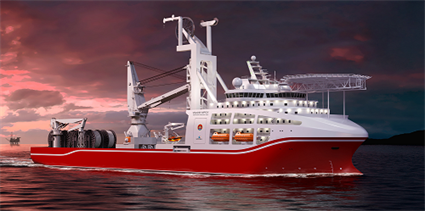 Image courtesy: Wärtsilä
Image courtesy: Wärtsilä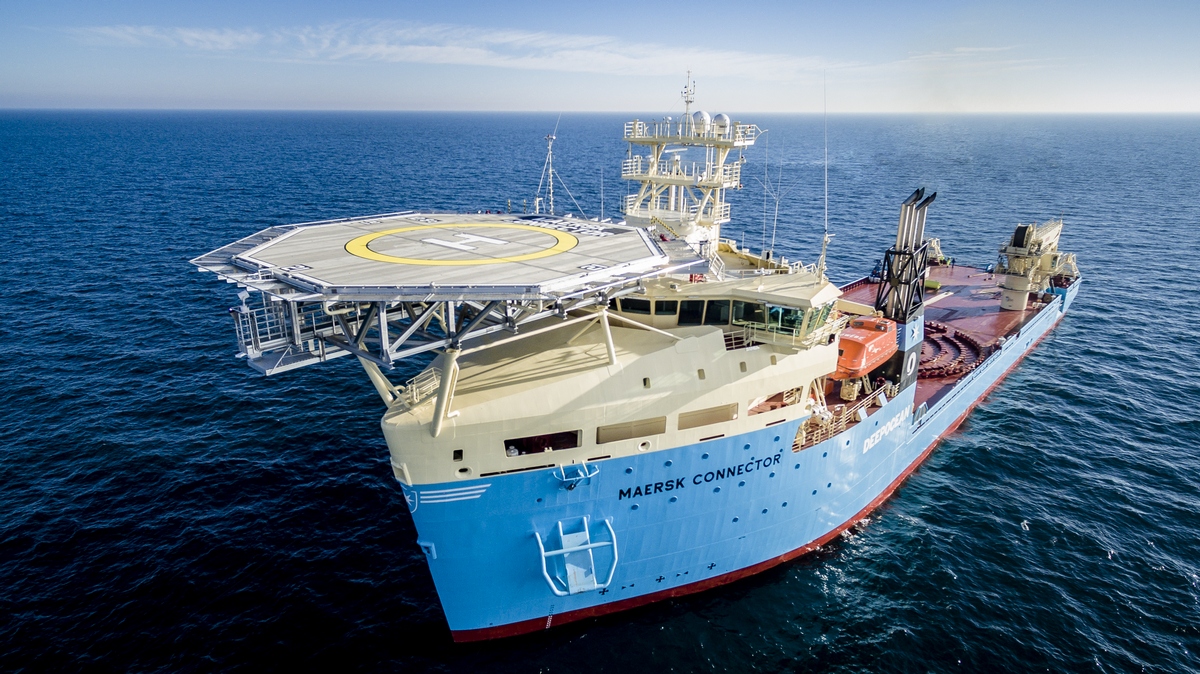 On 4 February 2016 the DP2 cable installation vessel Maersk Connector was handed over from
On 4 February 2016 the DP2 cable installation vessel Maersk Connector was handed over from 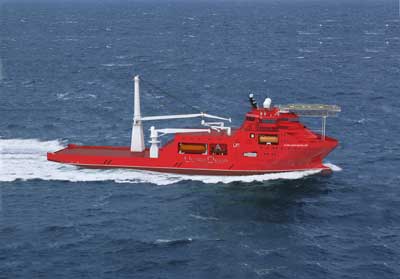 ABB, a leading power and automation technology group, will provide the technology that will help three vessels safely carry out construction and maintenance tasks up to 5 kilometers under water. The vessels will be equipped with ABB’s OCTOPUS software that uses sensors and the Internet of Things, Services and People (IoTSP) to interpret weather conditions, allowing the crew to make informed decisions during sensitive operations. The ships will be built for Ultra Deep Solutions at CSIC Huangpu Wuchang Shipbuilding Company Limited and China Merchants Heavy Industry.
ABB, a leading power and automation technology group, will provide the technology that will help three vessels safely carry out construction and maintenance tasks up to 5 kilometers under water. The vessels will be equipped with ABB’s OCTOPUS software that uses sensors and the Internet of Things, Services and People (IoTSP) to interpret weather conditions, allowing the crew to make informed decisions during sensitive operations. The ships will be built for Ultra Deep Solutions at CSIC Huangpu Wuchang Shipbuilding Company Limited and China Merchants Heavy Industry.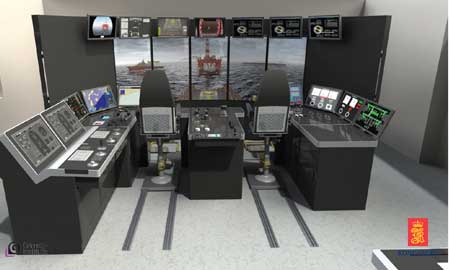 Modal Training, the first organization in the UK to offer integrated, multimodal logistics training, has invested in a full suite of advanced ship, offshore vessel, engine room and radar simulators from
Modal Training, the first organization in the UK to offer integrated, multimodal logistics training, has invested in a full suite of advanced ship, offshore vessel, engine room and radar simulators from 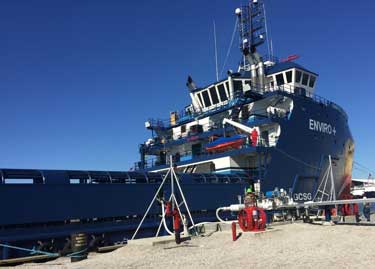 Harvey Gulf
Harvey Gulf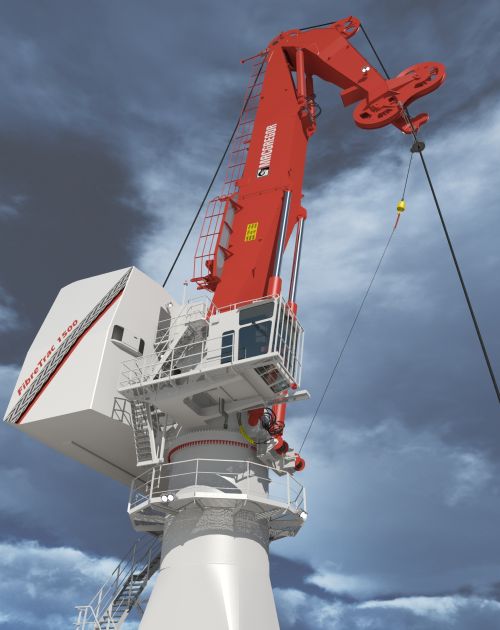 MacGregor, part of Cargotec, can now offer the offshore industry a technology-leading fiber-rope crane. The crane has been developed by combining MacGregor's proven offshore crane technology with the fiber-rope tensioning technology perfected by Parkburn Precision Handling Systems. The companies have entered into a cooperation agreement to combine MacGregor's offshore crane expertise with Parkburn's fiber-rope tensioning technology.
MacGregor, part of Cargotec, can now offer the offshore industry a technology-leading fiber-rope crane. The crane has been developed by combining MacGregor's proven offshore crane technology with the fiber-rope tensioning technology perfected by Parkburn Precision Handling Systems. The companies have entered into a cooperation agreement to combine MacGregor's offshore crane expertise with Parkburn's fiber-rope tensioning technology. Oceaneering’s Maritime Business Systems
Oceaneering’s Maritime Business Systems Event attendees will see live PortVision 360 demonstrations and learn about enhanced alerting and reporting capabilities that can be customized for information sharing and collaboration. Oceaneering will also host exclusive sessions with key customers and industry stakeholders during the day, focused on critical issues facing marine terminal management and marine pipeline protection.
Event attendees will see live PortVision 360 demonstrations and learn about enhanced alerting and reporting capabilities that can be customized for information sharing and collaboration. Oceaneering will also host exclusive sessions with key customers and industry stakeholders during the day, focused on critical issues facing marine terminal management and marine pipeline protection.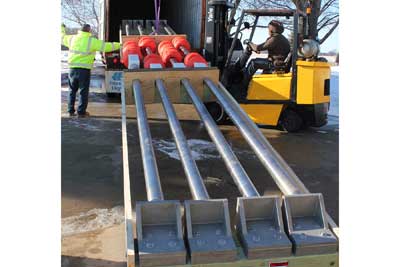 Eliminating the slack line required for conventional tie-ups,
Eliminating the slack line required for conventional tie-ups,